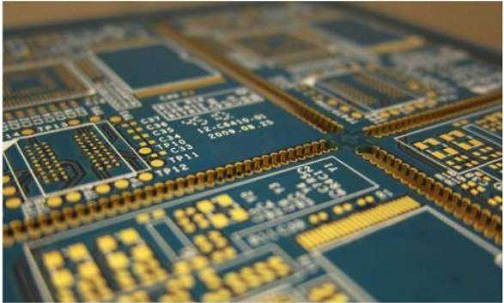There are single-sided, double-sided, and multi-layer PCB boards. The number of layers of multi-layer boards is not limited. At present, there are more than 100 layers of PCBs, and common multi-layer PCBs are four-layer and six-layer boards. So why do people have the question "Why are PCB multilayer boards all even-numbered layers?"
Relatively speaking, even-layer PCBs do have more advantages than odd-layer PCBs.
1. Low cost
Because there is one less layer of dielectric and foil, the cost of raw materials for odd-numbered PCB boards is slightly lower than that of even-numbered PCBs. However, the processing cost of odd-layer PCBs is significantly higher than even-layer PCBs. The processing cost of the inner layer is the same, but the foil/core structure significantly increases the processing cost of the outer layer.
Odd-layer PCBs require a non-standard lamination core layer bonding process on the basis of the core structure process. Factories that add foil outside the core structure will lose productivity compared to the core structure.
The outer core requires additional processing prior to lamination bonding, which increases the risk of scratching and etching errors on the outer layer.
2. Balanced structure to avoid bending
The best reason not to design a PCB with odd layers is that odd-layer boards are prone to flexing.
When the PCB is cooled after the multilayer circuit bonding process, the different lamination tensions of the core structure and the foil-clad structure as they cool can cause the PCB to bend.As the thickness of the board increases, the risk of bending a composite PCB with two different structures increases. The key to eliminating board flex is a balanced stackup.
Although a PCB with a certain degree of curvature meets the specification requirements, the subsequent processing efficiency will be reduced, resulting in increased costs. Because special equipment and processes are required for assembly, the accuracy of component placement is reduced, so quality will be compromised.
To put it another way, it is easier to understand: in the PCB process, the four-layer board is easier to control than the three-layer board, mainly in terms of symmetry, the warpage of the four-layer board can be controlled below 0.7% (the standard of IPC600), but When the size of the three-layer board is large, the warpage will exceed this standard, which will affect the reliability of the SMT patch and the entire product.
Therefore, ordinary designers do not design odd-numbered layers. Even if the odd-numbered layers realize functions, they will be designed as false even-numbered layers, that is, 5 layers are designed into 6 layers, and 7 layers are designed into 8 layers.
For the above reasons, most of the PCB multilayer boards are designed with even layers, and there are fewer odd layers.
3. How to balance stacking and reduce costs?
What if there is an odd number of layers of PCB in the design?
The following methods can be used to achieve balanced stacking, reduce PCB manufacturing costs, and avoid PCB bending.
1) One layer of signal layer and use. This method can be used if the design PCB has an even number of power planes and an odd number of signal planes. The added layers do not increase cost, but can shorten lead times and improve PCB quality.
2) Add an additional power layer. This method can be used if the design PCB has an odd number of power planes and an even number of signal planes. An easy way to do this is to add a formation in the middle of the stack without changing other settings. First route the PCB on the odd-numbered layers, then duplicate the ground layer in the middle, marking the remaining layers. This is the same as the electrical characteristics of the thickened layer foil.
3) Add a blank signal layer near the center of the PCB stackup. This method minimizes stack unbalance and improves the quality of the PCB. Route the odd-numbered layers first, then add a blank signal layer and mark the remaining layers. Used in microwave circuits and mixed-medium (medium with different dielectric constants) circuits.





